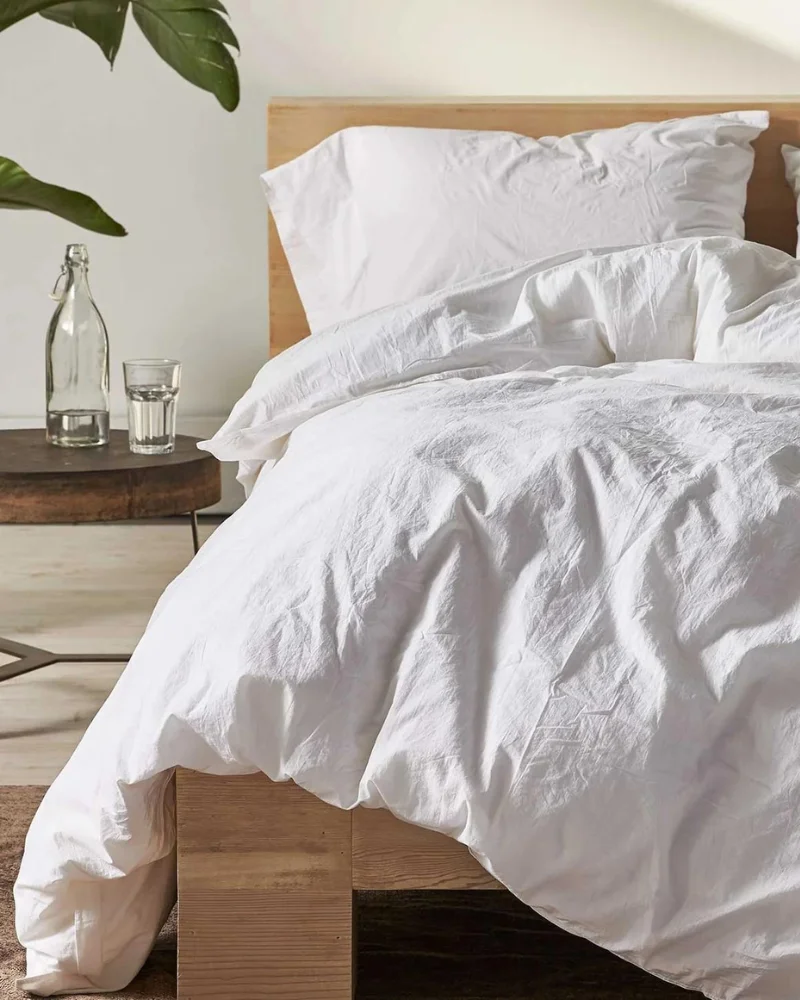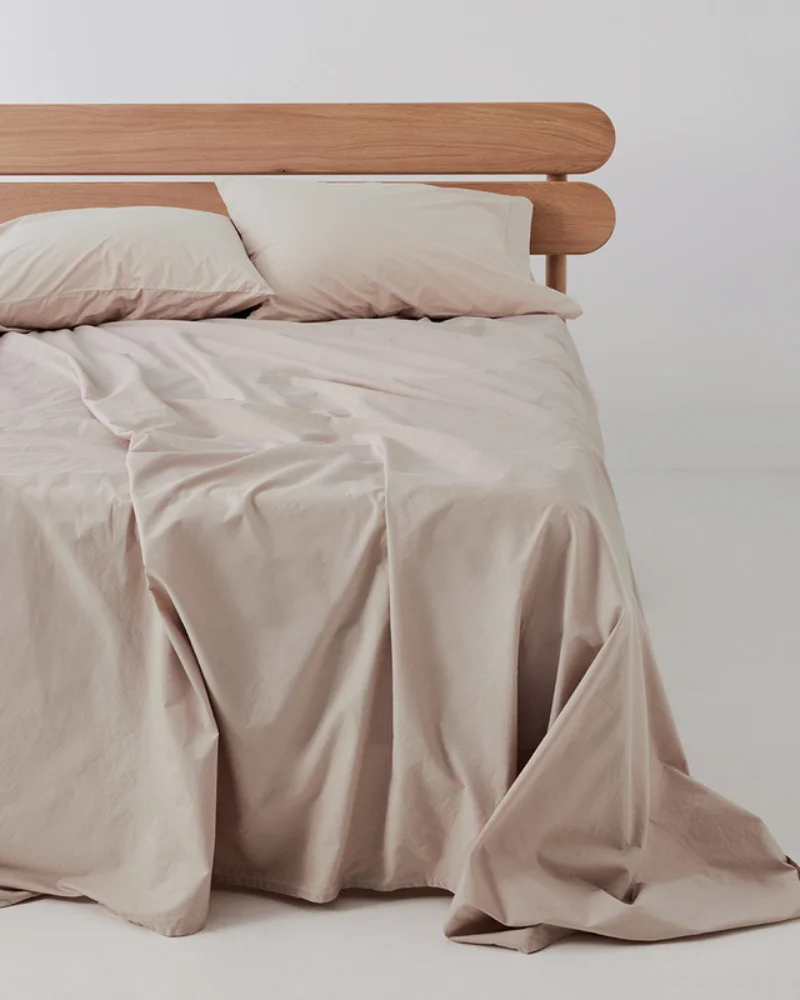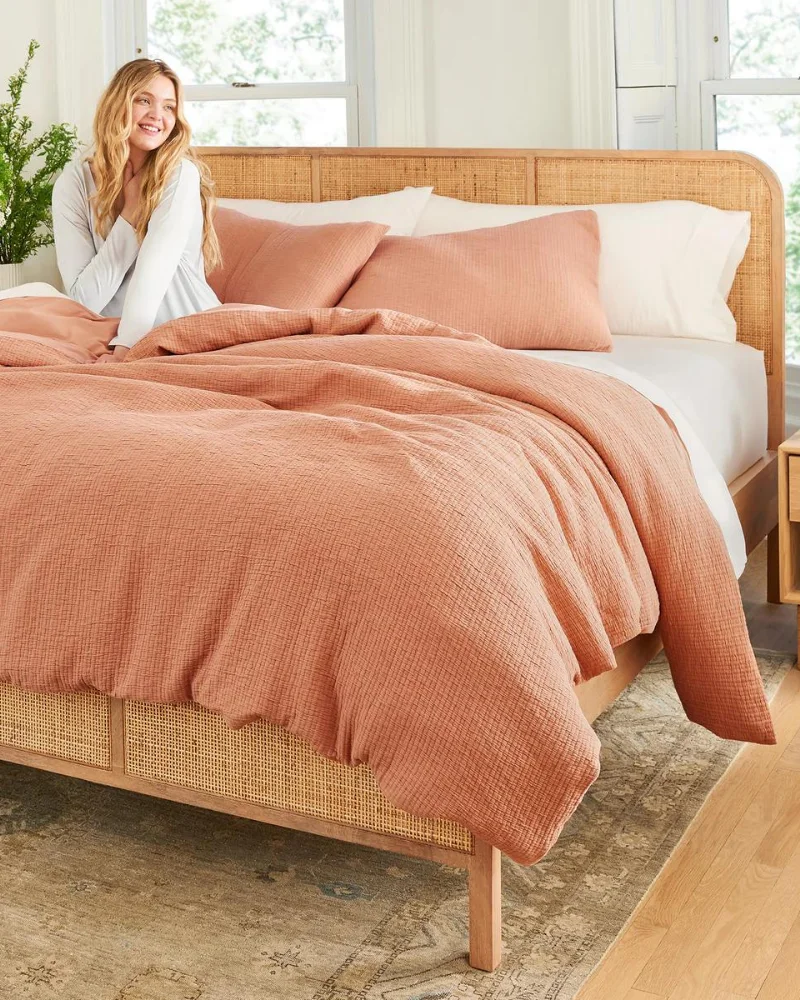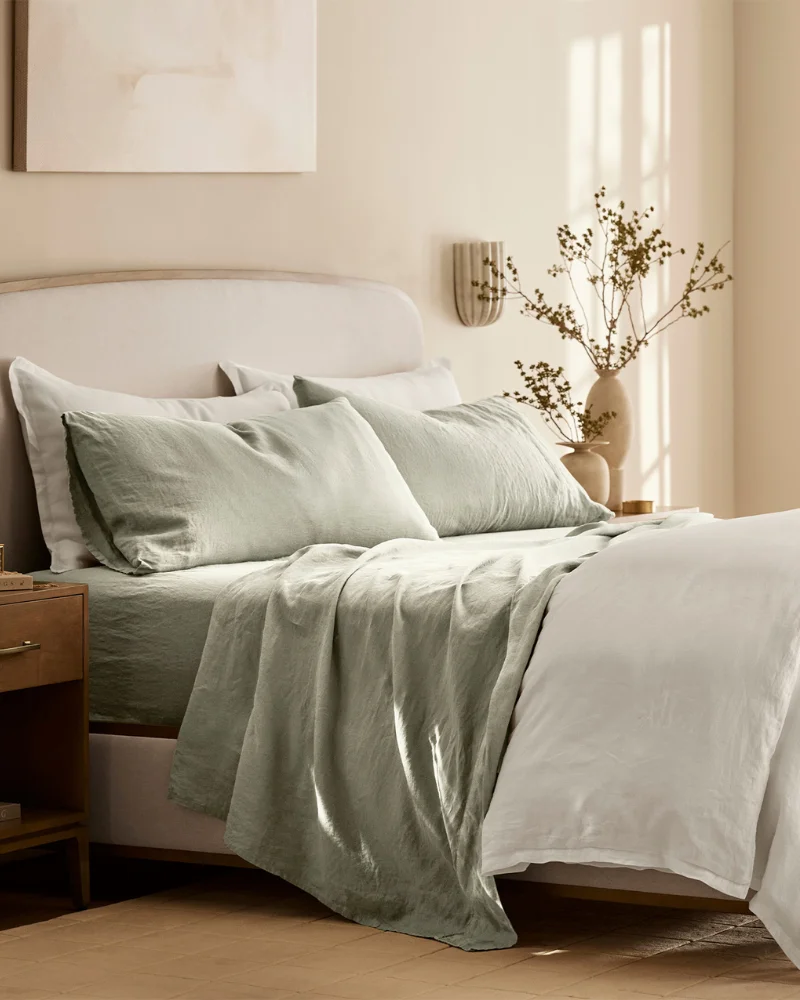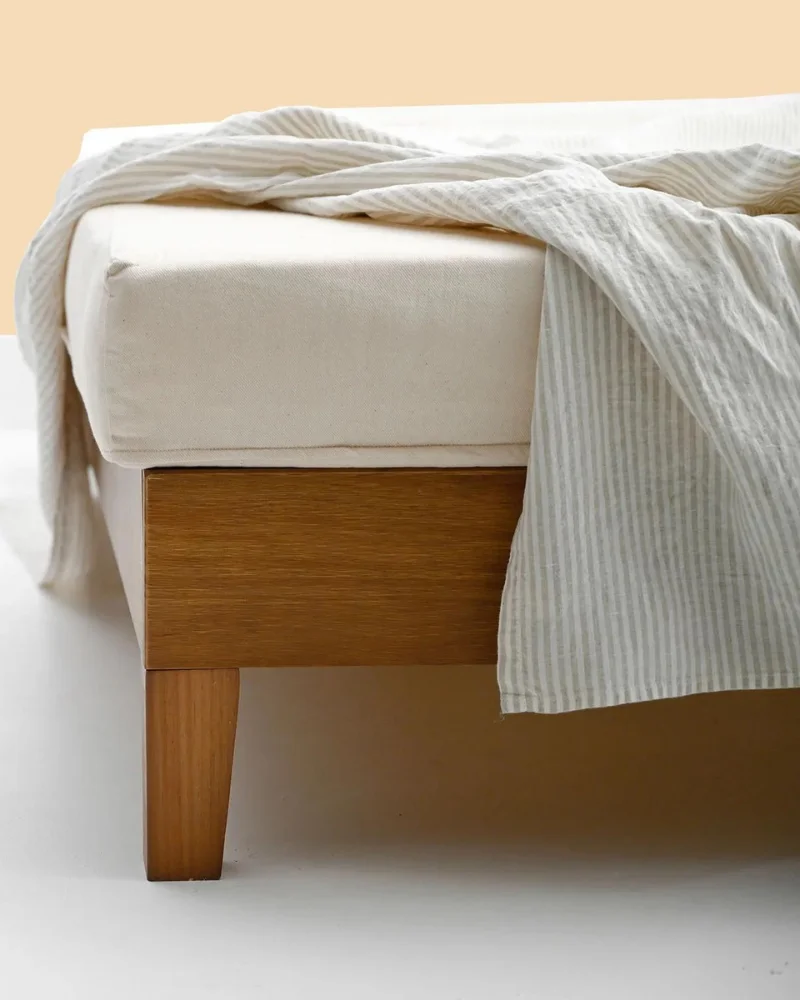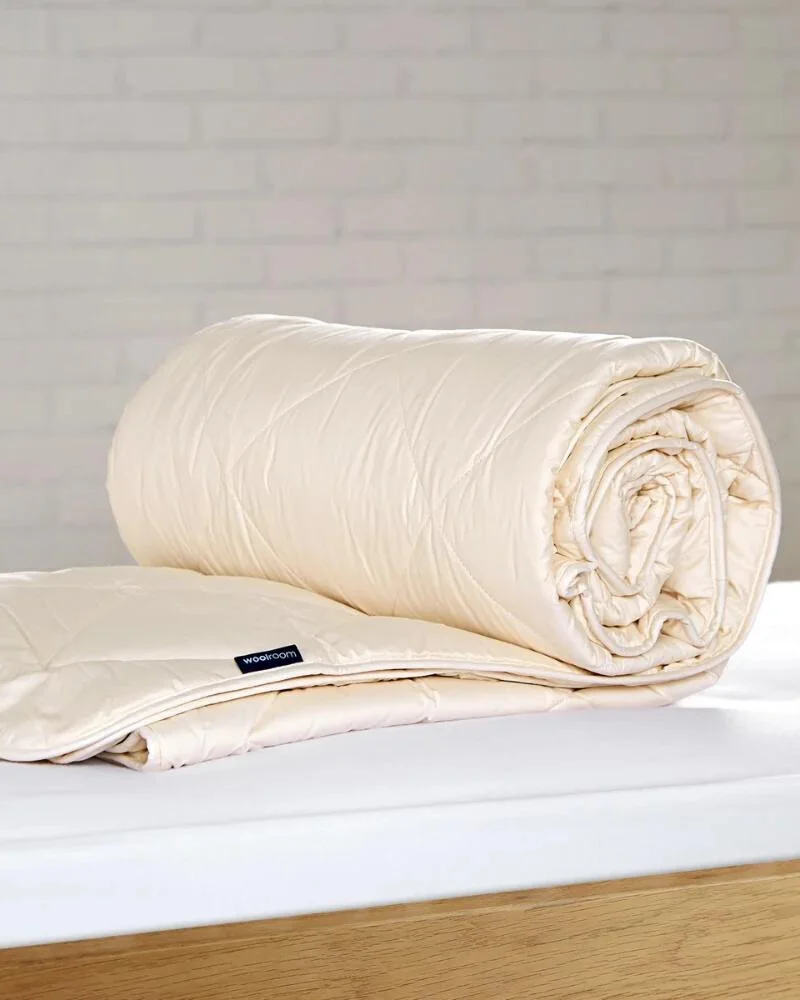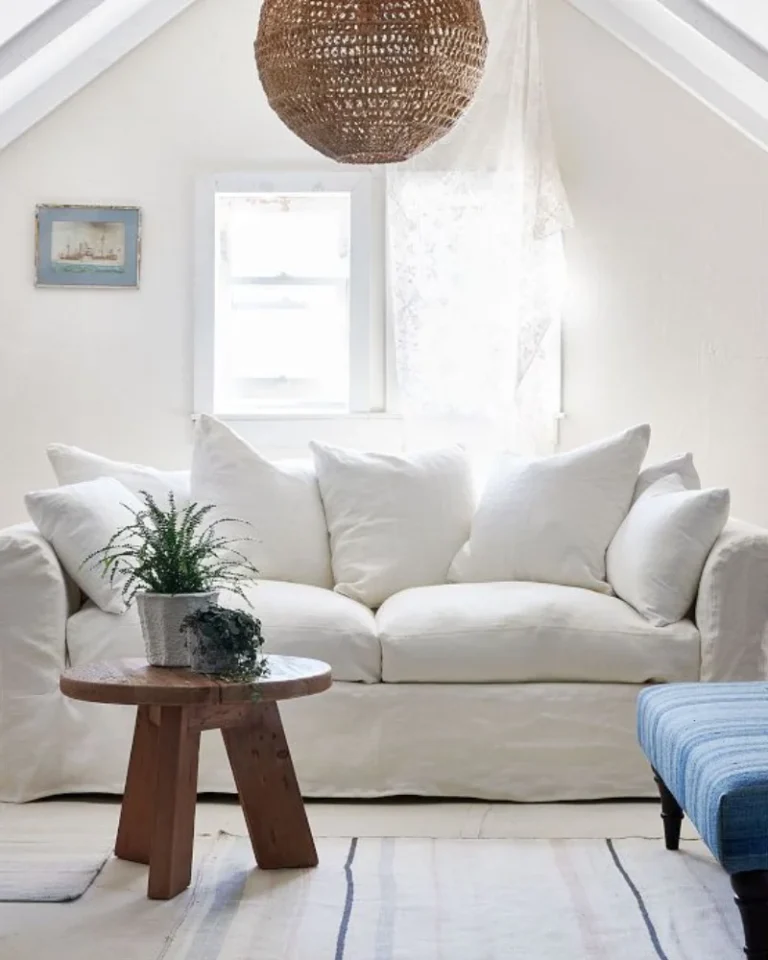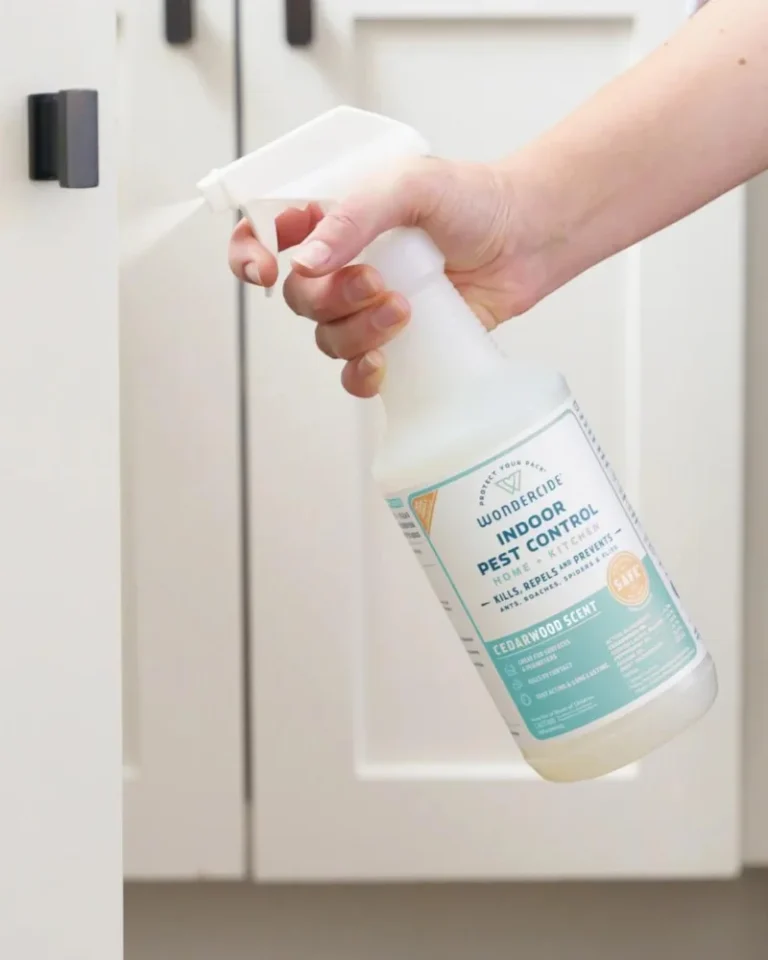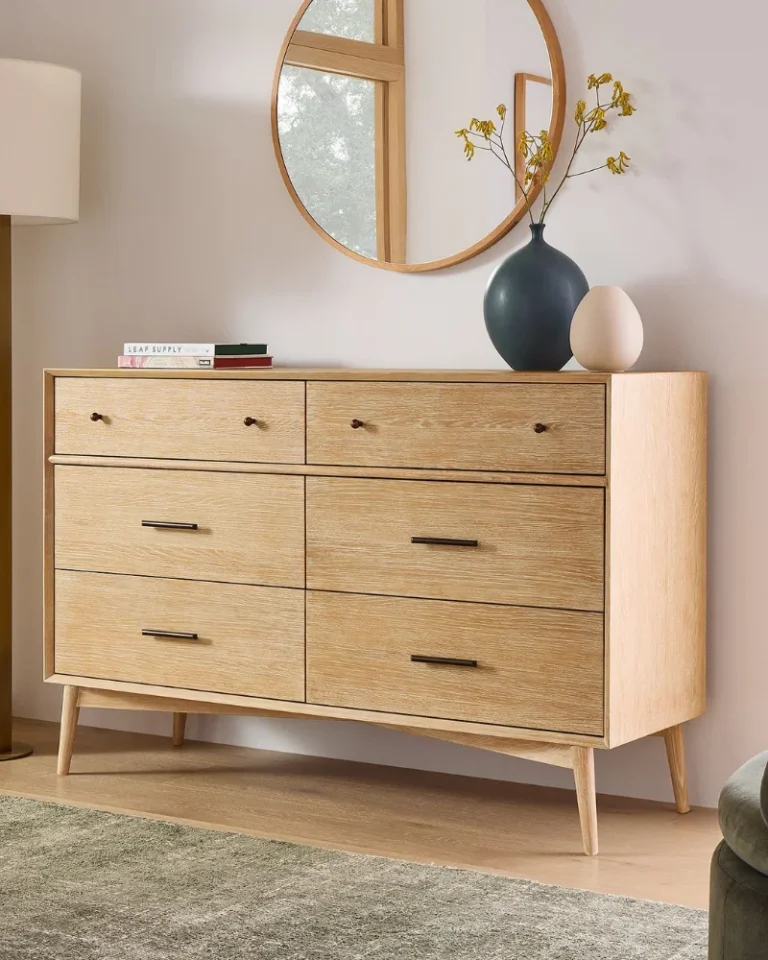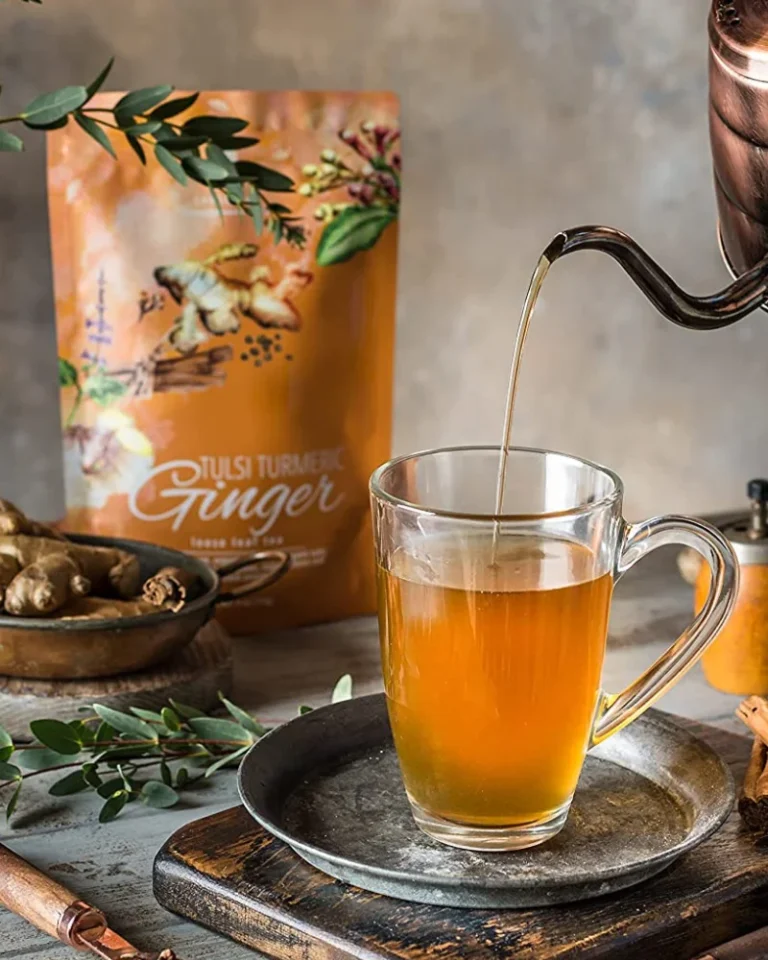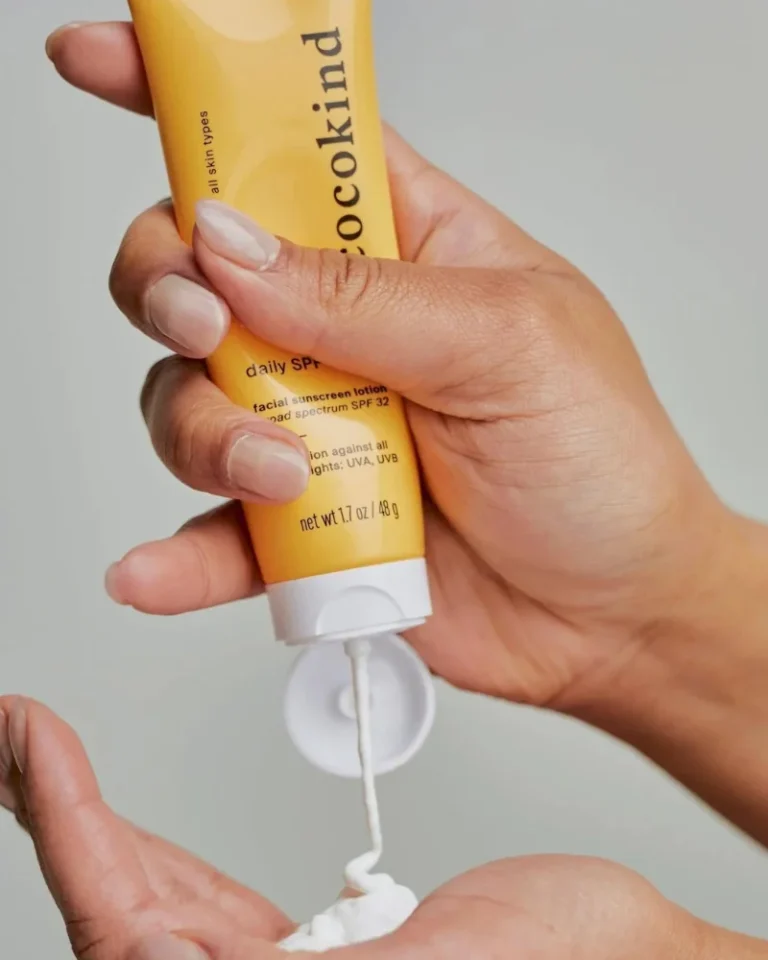This post may contain affiliate links. By browsing this website, you agree to our disclaimer, privacy policy, and terms of use.
Are you in search of the best non-toxic bedding brands for a healthier, more restful sleep?
You’re not alone! Since we spend over ⅓ of our lives in bed, and with a growing awareness around the potential health risks found in many conventional bedding materials, more and more people are seeking out cleaner, safer alternatives.
However, navigating the world of non-toxic bedding can be a little tricky. Trying to differentiate between marketing terms like “organic”, “natural”, and “eco-friendly” and what they mean can feel like you’re spinning in circles.
That’s why we’ve created this guide to tell you exactly what to look for and what to avoid when you’re shopping for non-toxic bedding.
And to make things even easier, we’ve included a list of our 11 go-to non-toxic bedding brands that provide the highest-quality all-natural bed linens for your comfiest, coziest night’s sleep ever.
When you slip into your sheets at night, do you ever stop to think about what you’re really snuggling up against? You might be alarmed to discover that night after night you might be slipping into sheets that contain formaldehyde, pesticides, toxic artificial dyes, and more that could be compromising your health.
It can be worrying to realize that the very items you rely on for comfort and rest might actually be undermining your health! But here’s the good news – you have alternatives.
By making the switch to non-toxic bedding, you can surround yourself with pure, natural materials that work in harmony with your body, promoting healthier, more rejuvenating sleep.
Natural materials like organic cotton, linen, hemp, and wool deliver the best in comfort and breathability, and the best part is they are chemical-free. When you switch from sheets made with synthetic materials we have a feeling you’ll never want to switch back.
After extensive testing of numerous non-toxic bedding brands, we’ve carefully selected these 11 exceptional collections. Each offers optimal comfort, premium materials, and sustainable manufacturing practices, so you can breathe better and sleep more deeply.
So if you’re ready to experience the transformative power of sleeping on non-toxic bedding? Keep reading!
The Best Organic Cotton Bedding Brands
Embrace carefree comfort with Coyuchi’s Organic Crinkled Percale Sheet Set.
Crafted from 100% organic cotton percale, these sheets envelop you in unpretentious softness.
The relaxed, naturally breathable fabric is finished with a non-toxic, plant-based softener so that the cotton fabric is gentle on your skin.
As a pioneer in sustainable home textiles, Coyuchi is dedicated to creating luxurious products while minimizing environmental impact.
Their MADE SAFE certification guarantees bedding untainted by pesticides or toxic chemicals and they partner with factories that recycle 90% of their wastewater.
Price
$148.00+
materials
100% GOTS-certified organic cotton grown in India
location/shipping
United States, ships within the US.
Stay cool and comfortable all night long with Pact’s Organic Cool-Air Percale Sheet Set.
Crafted from premium organic cotton in a specially designed cooling weave, these sheets offer a crisp, airy feel that’s perfect for hot sleepers.
The double sanforizing process (a fabric treatment process that pre-shrinks cotton to reduce shrinkage after washing) ensures a super soft, crisp finish that gets better with every wash.
By choosing Fair Trade Certified organic cotton, you’re contributing to a healthier planet and better sleep.
Organic farming practices eliminate harmful pesticides and fertilizers, minimizing water pollution and conserving resources.
You can feel good knowing your bedding supports responsible farming practices and promotes a more sustainable future.
Price
$160.00+
materials
100% Fair Trade Certified Organic Cotton
location/shipping
United States, ships to the US and select international countries.
Elevate your sleep experience with Naturepedic’s Organic Cotton Percale Sheets.
Made from premium 300 thread count GOTS-certified organic cotton, these sheets offer a crisp, breathable feel that softens the more you use them.
With rigorous certifications like MADE SAFE and UL/GREENGUARD, you can trust that your bedding is free from harmful chemicals, toxic fumes, and other harsh chemicals that can compromise your health.
As a member of 1% for the Planet, Naturepedic donates a portion of its profits to environmental causes.
They also package their bedding in reusable organic fabric bags, reducing plastic waste.
Price
$189.00+
materials
300 thread count GOTS-certified organic cotton percale
location/shipping
United States, ships to the US and select international countries.
Dream in pure comfort with Under the Canopy’s Organic Crinkle Matelasse Duvet Set.
Woven from 100% organic Turkish cotton, this duvet set features a fluffy, textured jacquard Matelasse on the front and a garment-washed percale on the back.
Small-batch garment dyeing lends a super soft, relaxed look that only gets better with time, making this duvet set a cozy and inviting addition to your bedroom. It’s the perfect lived-in feel.
The OEKO-TEX® MADE IN GREEN certification adds an extra layer of assurance, guaranteeing that your bedding is free from harmful chemicals and produced in environmentally and socially responsible facilities.
We also love that Under the Canopy packages, this duvet set in a cute reusable Organic Crinkle Matelasse dust bag to help keep your linen closet organized.
Price
$176.00+
materials
100% GOTS-certified organic Turkish cotton, woven in Pakistan
location/shipping
United States, ships to the US and select international countries.
Sleep sustainably with Blaynk’s Undyed Organic Cotton Sheet Set.
Made with just three simple ingredients – organic cotton, rainwater, and wind power – these sheets are the epitome of eco-friendly luxury.
Blaynk’s unique production process relies entirely on harvested rainwater, resulting in no wastewater or pollution, while the factory is powered by renewable wind energy, minimizing the carbon footprint of your bedding.
The sateen weave of premium long-staple organic cotton creates a luxuriously soft and breathable sheet, with a 300 thread count that you’ll look forward to using all year round.
Blaynk is committed to using only the highest quality organic materials.
They partner exclusively with suppliers certified by MADE IN GREEN and GOTS, ensuring their sheets are free from harmful chemicals and produced in environmentally and socially responsible ways.
Price
$119.00+
materials
100% GOTS-certified organic cotton
location/shipping
United States, ships to the US and Canada.
The Best European Linen Bedding Brands
Indulge in the breathable softness of Boll & Branch’s Linen Sheet Set.
Made from 100% European flax, these sheets are crafted without the use of harmful pesticides, GMOs, or toxins.
Boll & Branch’s signature 4-step garment washing process yields an immediately soft hand feel that only improves with time, making these sheets a true investment in your comfort.
Boll & Branch focuses on thread quality rather than thread count, selecting only the finest organic materials and employing meticulous craftsmanship to deliver an unparalleled sleep experience.
The lightweight, airy weave of these linen sheets is perfect for even the warmest sleepers, providing a luxuriously laid-back feel that encourages relaxation.
Price
$279.00+
materials
100% European organic flax
location/shipping
United States, ships within the US and Canada.
Experience year-round comfort with SOL Organics’ Classic Linen Sheets Set.
Made from the finest Certified European Flax, these sheets are light and breathable during the summer months and naturally temperature-regulating in the winter.
While some linen sheets can feel a bit rough at first, SOL Organics linen sheets are exceptionally soft from the start, making them ideal for even the most sensitive skin.
The inherent resilience of linen fibers means these sheets will withstand years of use and washing, reducing the need for frequent replacements and contributing to a more sustainable lifestyle.
Price
$175.00+
materials
100% Certified European Flax
location/shipping
United States, ships to the US and Canada.
The Best Organic Hemp Bedding Brands
Experience the unparalleled combination of luxury and eco-consciousness with Avocado’s Organic Hemp Sheets.
Crafted from 100% GOTS-certified organic hemp, these sheets have a linen-like texture that softens with every wash, hugging you in comfort night after night.
The thermoregulating properties of hemp keep you cool in the summer and warm in the winter, so you have a blissful night’s sleep no matter the season.
Hemp’s inherent resistance to pests makes it an ideal crop for organic farming, reducing the need for harmful pesticides and herbicides.
It also requires less water and land compared to cotton. As a result, hemp farming has a significantly lower environmental impact compared to other textile crops
Price
$459.00+
materials
100% GOTS-certified organic hemp
location/shipping
United States, ships within the US.
Experience luxury the way nature intended with Rawganique’s ELMSBURY Organic Hemp Bedding Sets.
As the world’s first and only 100% organic and biodegradable hemp bedding, these sheets are a true testament to sustainable comfort.
Rawganique grows, weaves, and sews each piece in-house for uncompromised purity and craftsmanship, ensuring that you receive only the best bedding.
Rawganique’s sheets are free from GMOs, pesticides, toxic chemicals, dyes, and harmful substances like formaldehyde and dioxin.
They are great for even the most chemically sensitive sleepers.
The brand’s dedication to ethical production is evident in their sweatshop-free manufacturing process, ensuring that every step of the supply chain is socially responsible.
Price
$395.00+
materials
100% non-GMO organically grown European hemp
location/shipping
United States, ships to the US, Canada, United Kingdom, Australia, and Italy.
The Best Organic Wool Bedding Brands
Discover the pure softness and luxurious comfort of PlushBeds’ Natural Wool Comforter.
Meticulously handcrafted in California with premium materials, this comforter features a lavishly soft virgin wool fill and a GOTS-certified organic cotton sateen cover.
The wool used in this comforter is free from harsh chemicals, detergents, and irritants, making it a safe and cozy choice for even sensitive sleepers.
Experience year-round comfort with this wool comforter. Wool’s natural temperature-regulating properties keep you warm in winter and cool in summer.
The breathable organic cotton sateen cover with its 344 thread count wicks away moisture, ensuring a comfortable and restful sleep every night.
PlushBeds’ commitment to quality craftsmanship is evident in every detail of this comforter.
Each piece is tufted by hand and carefully stitched. Your family will love it for years to come.
Price
$586.00+
materials
Virgin Wool fill, GOTS-certified organic cotton sateen cover (344 thread count)
location/shipping
United States, ships to the US, Canada, United Kingdom, Australia, and Italy.
Experience the perfect balance of comfort and temperature regulation with the Organic Washable Wool Comforter from Wool Room.
The innovative washable wool technology allows for easy machine washing without the risk of shrinkage or felting. How great is that?!
Crafted with 10.3 ounces per square yard of certified organic, traceable British wool and a 300-thread count organic cotton cover, this medium-weight comforter offers a naturally luxurious sleep experience like no other.
Suitable for room temperatures between 60-68°F (15-20°C), you’ll never be too hot or too cold, so you get deeper, more restful sleep.
Wool Room is committed to ethical sourcing. They only use fully traceable, responsibly grown wool and have a strict Wool ID program to ensure every step of the supply chain is audited.
This means the sheep are well-cared for, and the land is managed responsibly.
The Organic Washable Wool Comforter is also naturally flame retardant, hypoallergenic, and resistant to mold, mildew, and dust mites, so it’s great for those with allergies or respiratory sensitivities.
Price
$450.00+
materials
100% British traceable, washable, and organic wool, Outer Fabric: 100% unbleached 300 thread count organic cotton
location/shipping
Designed and developed in the UK, hand-crafted in Europe, ships to the US and select international countries.
What are the toxic chemicals commonly found in conventional bedding?
| Toxic Chemical/Material | Why It’s In Bed Sheets | Health Risks |
| Formaldehyde | Wrinkle resistance: Used to maintain the shape of bed sheets and prevent wrinkles | Respiratory irritation, headaches, allergies |
| Pesticides | Residue from cotton cultivation: If cotton is grown conventionally, it may be exposed to pesticides during the growing process, which can leave residue on the fabric. | Neurological problems, cancer, reproductive issues |
| Artificial Dyes | Coloration: Used to add color to bed sheets. Some dyes, especially azo dyes, can release harmful substances. | Allergies, skin irritation, cancer (some dyes) |
| Flame Retardants | Fire resistance: Added to bed sheets to make them less flammable, especially for children’s bedding. | Neurological problems, thyroid issues, reproductive problems |
| Phthalates | Softening agent: Used to make fabrics softer and more pliable. | Reproductive problems, endocrine disruption |
| Arsenic | Dye component: Some dyes, especially older ones, may contain arsenic, a heavy metal. | Skin cancer, lung cancer, other health problems |
| Lead | Dye component: Similar to arsenic, lead can be found in some dyes, especially older ones. | Neurological damage, especially in children |
| Perfluorinated Compounds (PFCs) | Stain and water resistance: Used to repel stains and water | Reproductive problems, other health issues |
| Azo Dyes | Coloration: A class of dyes that can release harmful substances, especially aromatic amines, when broken down. | Allergies, cancer (some dyes) |
| Chlorine Bleach | Bleaching agent: Used to bleach some fabrics, especially cotton and bamboo. | Respiratory problems, skin irritation |
| Nonylphenol Ethoxylates (NPEs) | Surfactants: Used as wetting agents and emulsifiers in some textile processes. | Endocrine disruption, reproductive problems |
| Benzothiazole | Antifungal agent: Added to fabrics to prevent mold and mildew growth. | Allergies, skin irritation |
| Alkylphenols | Surfactants: Used as wetting agents and emulsifiers in some textile processes. | Endocrine disruption, reproductive problems |
This has been your complete guide to the best non-toxic bedding brands for 2024.
Opting for non-toxic bedding can make a big impact on achieving the restful, rejuvenating sleep you’ve been dreaming of.
Non-toxic bedding supports your body’s long-term health so you wake up feeling energized, refreshed, and ready to take on the day.
While non-toxic bedding may be an upfront investment, you’re not just purchasing sheets and pillowcases – you’re investing in better sleep, which translates to a happier, healthier you!
Looking for more non-toxic home articles from the TFC team? Check these out!
